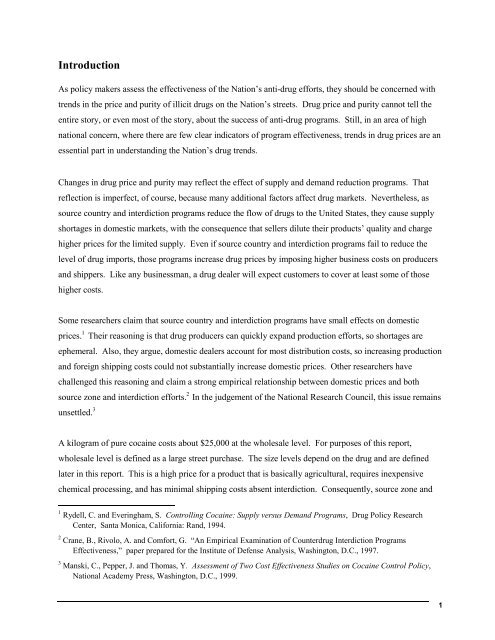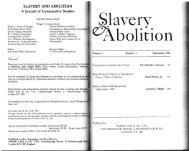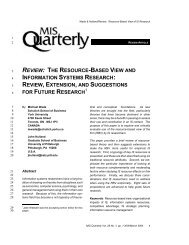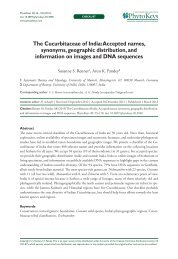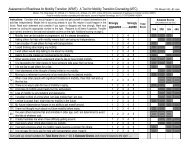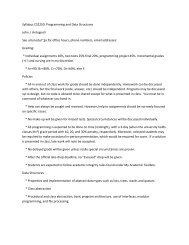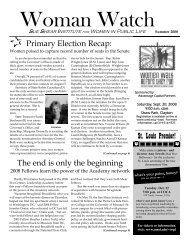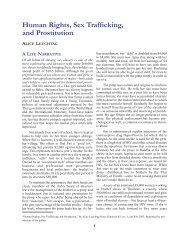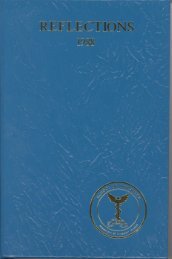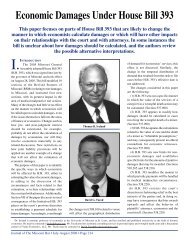The Price of Illicit Drugs: 1981 through the - The White House
The Price of Illicit Drugs: 1981 through the - The White House
The Price of Illicit Drugs: 1981 through the - The White House
You also want an ePaper? Increase the reach of your titles
YUMPU automatically turns print PDFs into web optimized ePapers that Google loves.
Introduction<br />
As policy makers assess <strong>the</strong> effectiveness <strong>of</strong> <strong>the</strong> Nation’s anti-drug efforts, <strong>the</strong>y should be concerned with<br />
trends in <strong>the</strong> price and purity <strong>of</strong> illicit drugs on <strong>the</strong> Nation’s streets. Drug price and purity cannot tell <strong>the</strong><br />
entire story, or even most <strong>of</strong> <strong>the</strong> story, about <strong>the</strong> success <strong>of</strong> anti-drug programs. Still, in an area <strong>of</strong> high<br />
national concern, where <strong>the</strong>re are few clear indicators <strong>of</strong> program effectiveness, trends in drug prices are an<br />
essential part in understanding <strong>the</strong> Nation’s drug trends.<br />
Changes in drug price and purity may reflect <strong>the</strong> effect <strong>of</strong> supply and demand reduction programs. That<br />
reflection is imperfect, <strong>of</strong> course, because many additional factors affect drug markets. Never<strong>the</strong>less, as<br />
source country and interdiction programs reduce <strong>the</strong> flow <strong>of</strong> drugs to <strong>the</strong> United States, <strong>the</strong>y cause supply<br />
shortages in domestic markets, with <strong>the</strong> consequence that sellers dilute <strong>the</strong>ir products’ quality and charge<br />
higher prices for <strong>the</strong> limited supply. Even if source country and interdiction programs fail to reduce <strong>the</strong><br />
level <strong>of</strong> drug imports, those programs increase drug prices by imposing higher business costs on producers<br />
and shippers. Like any businessman, a drug dealer will expect customers to cover at least some <strong>of</strong> those<br />
higher costs.<br />
Some researchers claim that source country and interdiction programs have small effects on domestic<br />
prices. 1 <strong>The</strong>ir reasoning is that drug producers can quickly expand production efforts, so shortages are<br />
ephemeral. Also, <strong>the</strong>y argue, domestic dealers account for most distribution costs, so increasing production<br />
and foreign shipping costs could not substantially increase domestic prices. O<strong>the</strong>r researchers have<br />
challenged this reasoning and claim a strong empirical relationship between domestic prices and both<br />
source zone and interdiction efforts. 2 In <strong>the</strong> judgement <strong>of</strong> <strong>the</strong> National Research Council, this issue remains<br />
unsettled. 3<br />
A kilogram <strong>of</strong> pure cocaine costs about $25,000 at <strong>the</strong> wholesale level. For purposes <strong>of</strong> this report,<br />
wholesale level is defined as a large street purchase. <strong>The</strong> size levels depend on <strong>the</strong> drug and are defined<br />
later in this report. This is a high price for a product that is basically agricultural, requires inexpensive<br />
chemical processing, and has minimal shipping costs absent interdiction. Consequently, source zone and<br />
1 Rydell, C. and Everingham, S. Controlling Cocaine: Supply versus Demand Programs, Drug Policy Research<br />
Center, Santa Monica, California: Rand, 1994.<br />
2 Crane, B., Rivolo, A. and Comfort, G. “An Empirical Examination <strong>of</strong> Counterdrug Interdiction Programs<br />
Effectiveness,” paper prepared for <strong>the</strong> Institute <strong>of</strong> Defense Analysis, Washington, D.C., 1997.<br />
3 Manski, C., Pepper, J. and Thomas, Y. Assessment <strong>of</strong> Two Cost Effectiveness Studies on Cocaine Control Policy,<br />
National Academy Press, Washington, D.C., 1999.<br />
1


